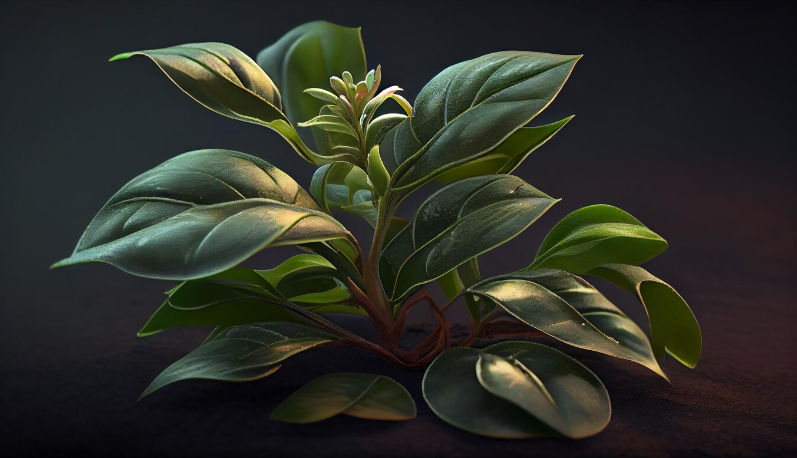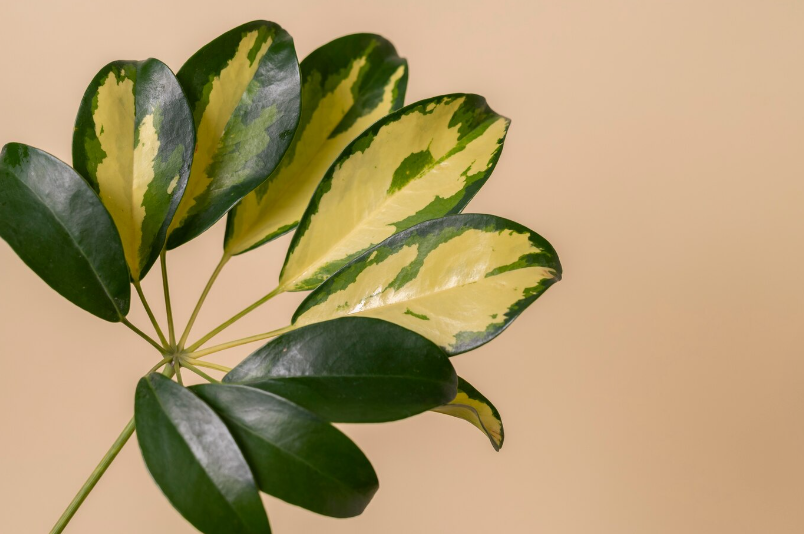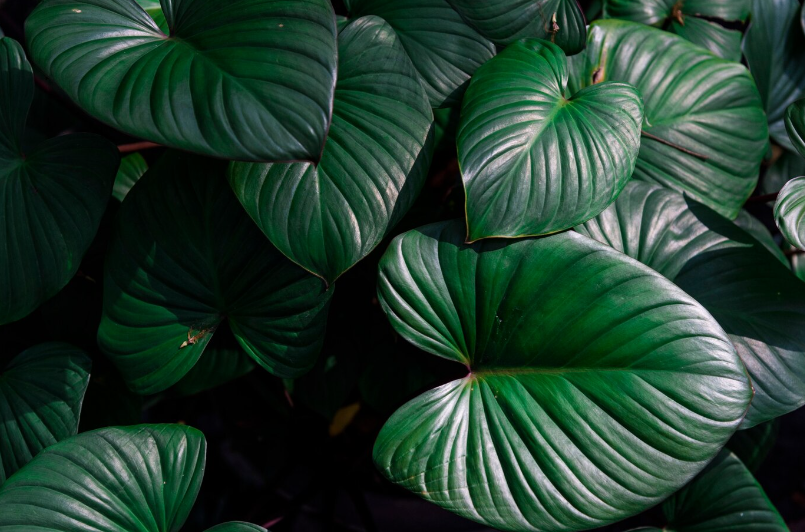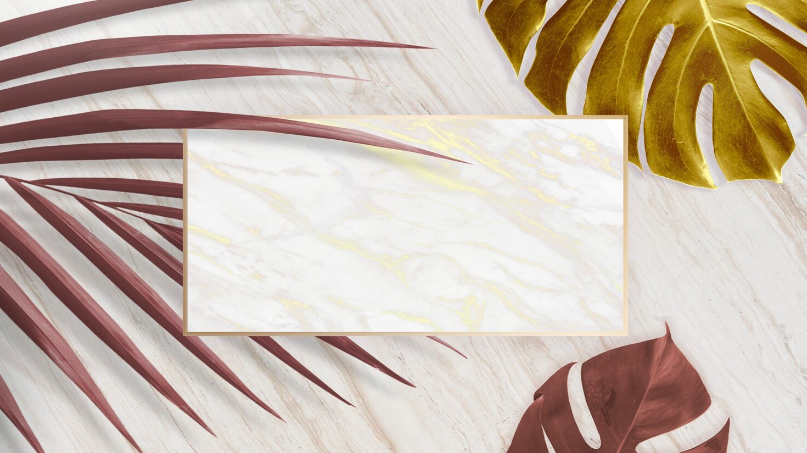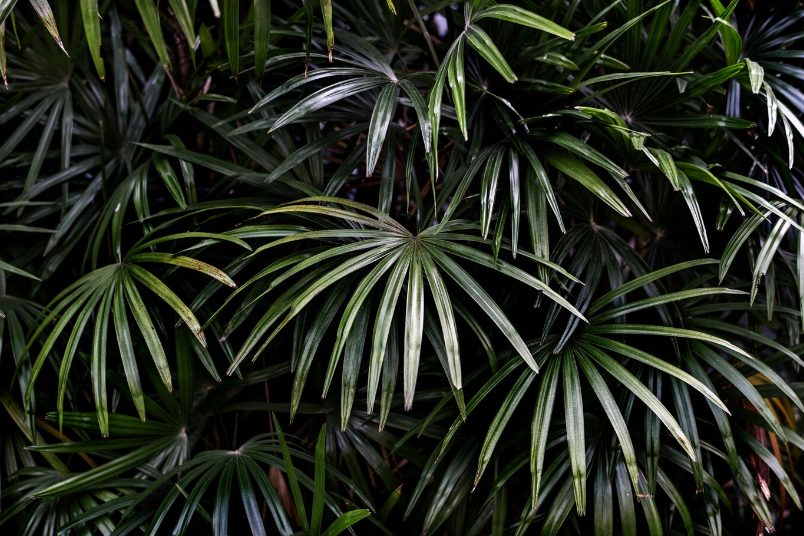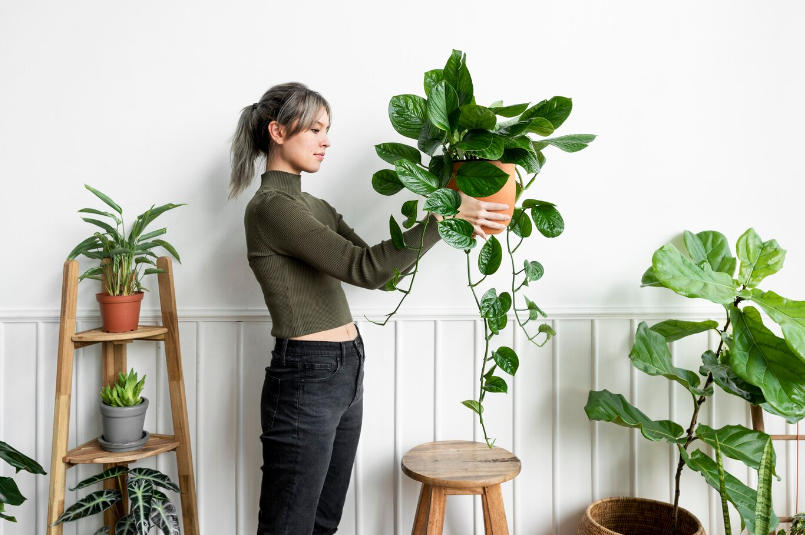Balancing Light Exposure for the Philodendron White Knight and Selloum

Looking to add some greenery to your indoor space? The Philodendron White Knight and Selloum are the perfect choices to brighten up any room.
However, just like any other houseplant, these beauties require the right balance of light exposure to thrive. Finding the perfect balance can be a tricky task, but with a little knowledge and care, you can create the ideal environment for these stunning plants.
First and foremost, it’s important to understand that both the Philodendron White Knight and Selloum prefer bright, indirect light. Placing them near a window that receives filtered sunlight is ideal. Too much direct sunlight can scorch their leaves, while too little light can hinder their growth.
When it comes to artificial lighting, providing them with bright, indirect light is crucial. Using fluorescent or LED lights placed above them can help mimic natural sunlight. Make sure to keep the lights on for around 12-14 hours a day to simulate their natural light cycle.
Another important aspect of light exposure is rotation. These plants tend to grow towards the light source, which can result in uneven growth. To prevent this, turn your plants every week or two to ensure all sides receive equal light exposure. This will help promote balanced growth and prevent leggy stems.
Lastly, it’s crucial to monitor your plants for any signs of light stress. If the leaves start turning yellow or brown, it could be an indication of too much light exposure. On the other hand, if they start losing their vibrant color and appear stretched, it could be a sign of insufficient light.
In conclusion, achieving the perfect balance of light exposure for your Philodendron White Knight and Selloum is key to their overall health and beauty. With the right amount of bright, indirect light, proper rotation, and monitoring for signs of stress, you’ll be able to enjoy these stunning plants for years to come.
Light Requirements for Optimal Growth
The White Knight Philodendron and Selloum thrive in well-lit conditions but can also tolerate lower light levels. It is essential to find the right balance of light exposure to ensure their optimal growth and development.
These plants prefer bright indirect light, such as that found near a north or east-facing window. Direct sunlight should be avoided as it can scorch the delicate leaves. If your plant is not receiving enough light, it may result in leggy growth, smaller leaves, and a less vibrant appearance.
On the other hand, if exposed to too much direct sunlight, the leaves may develop brown patches and burn marks. To protect your Philodendron White Knight and Selloum from excessive light exposure, you can use sheer curtains or blinds to filter out the intense rays while still allowing ample light to reach the plant.
A good way to determine if your plants are receiving the right amount of light is to observe their foliage. The leaves should be a vibrant green color, with no signs of discoloration or wilting. Adjust the positioning of your plants accordingly to ensure even light distribution.
| Light Intensity | Exposure |
|---|---|
| Low light | Up to 6 feet away from a window without direct sunlight |
| Medium light | Within 3-6 feet from a north or east-facing window with filtered sunlight |
| Bright indirect light | Within 3-6 feet from a north or east-facing window with no direct sunlight |
Remember to rotate your Philodendron White Knight and Selloum every few weeks to ensure even growth. This will prevent the plant from leaning towards the light source and encourage a balanced and symmetrical appearance.
In conclusion, finding the right balance of light exposure is crucial for the optimal growth and well-being of your Philodendron White Knight and Selloum. By providing them with the appropriate light intensity and avoiding direct sunlight, you can enjoy healthy, vibrant, and thriving plants in your home or office space.
Determining Ideal Light Levels for Philodendron White Knight
When it comes to growing Philodendron White Knight, determining the ideal light levels is crucial for its growth and overall health. Philodendron White Knight is a tropical plant that thrives in indirect bright light, but it can also tolerate low to medium light conditions.
To determine the ideal light levels for your Philodendron White Knight, there are a few factors to consider:
1. Natural Light: Observe the natural light levels in the area where you plan to place your Philodendron White Knight. Ideally, it should be placed in bright, indirect light with some protection from direct sunlight. Avoid placing it in areas with intense, direct sunlight as this can scorch the leaves.
2. Light Intensity: Consider the intensity of the light in the location you choose for your Philodendron White Knight. If the light is too strong, you can filter it using sheer curtains or blinds. On the other hand, if the light is too dim, you can supplement it with artificial lighting, such as fluorescent or LED grow lights.
3. Light Duration: Philodendron White Knight requires a consistent light duration of around 10-12 hours a day. Ensure that it receives enough darkness during the night for proper rest and rejuvenation.
4. Leaf Coloration: Pay close attention to the coloration of the leaves. If your Philodendron White Knight receives the right amount of light, its leaves will have a vibrant green color. If the leaves are pale or yellowish, it may indicate that the plant is receiving too little light. Conversely, if the leaves are dark green and have burned edges, it may suggest that the plant is getting too much direct sunlight.
5. Trial and Observation: Every environment is unique, so it may take some trial and observation to determine the ideal light levels for your Philodendron White Knight. Monitor the plant closely and make adjustments as necessary to ensure its optimal growth.
By following these guidelines and understanding the specific light requirements of your Philodendron White Knight, you can provide the ideal light conditions for it to thrive and display its stunning foliage.
Light Needs of Philodendron Selloum
Philodendron Selloum, also known as the Split-Leaf Philodendron, is a beautiful and popular houseplant that is highly sought after for its attractive foliage and low maintenance requirements. One of the key factors for successfully caring for this plant is providing it with the right amount of light.
Philodendron Selloum thrives in bright, indirect light. It can tolerate some direct sunlight, especially during the morning or late afternoon hours when the sun is less intense. However, prolonged exposure to direct sunlight can damage its leaves and cause them to yellow or burn.
If you’re placing your Philodendron Selloum near a window, it’s best to choose a spot where it receives bright, filtered light. You can also use sheer curtains or blinds to diffuse the light and protect the plant from direct sun. If you don’t have access to a sunny window, you can also use artificial grow lights to provide the necessary light for your Philodendron Selloum.
It’s important to note that Philodendron Selloum can tolerate lower light conditions, but it may result in slower growth and less vibrant foliage. If you notice your plant becoming leggy or the leaves losing their vivid green color, it’s a sign that it needs more light.
Overall, striking the right balance of light exposure is crucial for the health and well-being of your Philodendron Selloum. With the right amount of bright, indirect light, your plant will thrive and add a touch of tropical beauty to your indoor space.
Comparing Light Requirements of Philodendrons vs. Other Plants Like Pothos
When it comes to providing the right amount of light for your indoor plants, it’s important to understand their specific light requirements. This is especially true for philodendrons and other plants like pothos.
Both philodendrons and pothos are popular houseplants known for their lush foliage and ability to thrive in low light conditions. However, there are some key differences in their light requirements that should be taken into consideration.
| Plant | Light Requirements |
|---|---|
| Philodendron | Requires bright, indirect light |
| Pothos | Tolerates a wide range of light conditions, including low light |
Philodendrons, such as the White Knight and Selloum varieties, prefer bright, indirect light. Placing them near a north or east-facing window, where they can receive filtered light or bright, indirect sunlight, is ideal. Direct sunlight can scorch their leaves, so it’s important to avoid placing them in direct sunlight.
Pothos, on the other hand, are more versatile when it comes to light. They can tolerate a wider range of light conditions, including low light. This makes them a great choice for areas of your home that don’t receive a lot of natural light, such as offices or basements.
It’s also worth noting that both philodendrons and pothos can adapt to different light conditions over time. However, sudden changes in lighting can cause stress to the plants and may result in leaf drop or other issues.
In conclusion, while both philodendrons and pothos are excellent choices for indoor plants, their light requirements differ. Philodendrons thrive in bright, indirect light, while pothos can tolerate a wider range of light conditions, including low light. By understanding and providing the right amount of light for your plants, you can ensure their health and longevity.
Managing Light Intensity and Positioning
Properly managing the light exposure for your Philodendron White Knight and Selloum is crucial for their optimal growth and health. These plants thrive in bright, indirect light, but they can also tolerate lower light conditions to some extent. Here are some tips on how to manage the light intensity and positioning for these beautiful plants:
- Find the right spot: Place your Philodendron White Knight and Selloum in a location where they can receive bright, indirect light. Avoid placing them in direct sunlight, as this can scorch their leaves.
- Consider the intensity: If your plants are exposed to too much light, their leaves may turn yellow or develop brown spots. On the other hand, if they don’t receive enough light, their growth may slow down, and they may become leggy.
- Observe the leaves: Regularly inspect the foliage of your plants to assess their light exposure. If the leaves are pale and stretched, it’s a sign that they need more light. If the leaves are dark green and compact, they are receiving the right amount of light.
- Rotate your plants: To ensure even growth, rotate your Philodendron White Knight and Selloum every few weeks. This will allow all sides of the plant to receive adequate light, preventing lopsided growth.
- Supplement with artificial light: If your plants don’t have access to sufficient natural light, you can supplement their lighting with artificial sources. LED grow lights are a popular choice, as they provide the right spectrum of light for photosynthesis.
By managing the light intensity and positioning of your Philodendron White Knight and Selloum, you can ensure that they thrive and bring beauty to your indoor space. Remember to monitor their light needs and make adjustments accordingly to keep them happy and healthy.
Can Philodendrons, Including Selloum, Get Too Much Light?
While philodendrons, including Selloum, are known for their ability to thrive in low light conditions, it is important to note that they can also be negatively affected by excessive sunlight exposure. Philodendrons are native to the tropical regions of Central and South America, where they typically grow under the canopy of taller trees, receiving filtered, indirect light. Therefore, they have adapted to thrive under these light conditions.
When exposed to too much direct sunlight, the leaves of philodendrons can start to show signs of stress and damage. The intense sunlight can cause the leaves to turn yellow or develop brown patches. In extreme cases, the leaves may even burn and become crispy. This is because the intense light causes the plant to lose water faster than it can absorb, leading to dehydration and damage to the cellular structure.
It is important to strike a balance between providing enough light for the philodendron to thrive and protecting it from excessive sun exposure. If you notice that your philodendron is receiving too much light, it is recommended to gradually move it to a location with more shade or use window coverings to filter the sunlight.
In addition to protecting your philodendron from excessive light, it is also essential to ensure that it is receiving enough water and moisture. Philodendrons prefer well-draining soil that retains some moisture but doesn’t become waterlogged. Regularly check the soil moisture levels and adjust your watering schedule accordingly. Additionally, misting the leaves or placing the plant near a humidity tray can help to create a more humid environment, which is beneficial for philodendrons.
By providing the right amount of light, water, and humidity, you can ensure the health and longevity of your philodendron, whether it’s a White Knight or a Selloum variety.
Appropriate Light Exposure for Philodendrons: How Much is Too Much?
Proper light exposure is crucial for the health and growth of philodendron plants. While they thrive in bright, indirect light, it is important to strike a balance and avoid exposing them to excessive sunlight.
Direct sunlight can burn the delicate leaves of philodendrons, causing them to turn yellow and develop brown patches. On the other hand, insufficient light can lead to leggy growth and pale leaves.
It is recommended to place philodendrons in a location where they receive bright, filtered light for a few hours each day. This could be near a north- or east-facing window, or a few feet away from a west- or south-facing window. If the light is too intense, you can use sheer curtains or blinds to filter the sunlight.
An effective way to gauge the light intensity is by observing the plant’s leaves. If the leaves are dark green and healthy, it indicates that the light exposure is ideal. If the leaves are pale or yellowish, it may indicate that the plant is receiving too much or too little light.
| Signs of Too Much Light | Signs of Insufficient Light |
|---|---|
| Yellowing or browning of leaves | Leggy growth |
| Leaf burn or scorched patches | Pale or discolored leaves |
| Wilting or drooping leaves | Stunted growth |
It is important to monitor the light conditions regularly and adjust the plant’s placement accordingly. If you notice any signs of light stress, such as yellow leaves or scorched patches, move the plant to a slightly shadier spot. Conversely, if the leaves are pale and the growth is leggy, move the plant closer to a window or provide supplemental artificial light.
In conclusion, finding the right balance of light exposure is key to maintaining the health and beauty of philodendron plants. Consistent, bright, filtered light for a few hours each day will keep your philodendron thriving and enhance its natural beauty.
Best Placement and Exposure for Philodendron Plants
Choosing the right placement and providing the proper light exposure is crucial in ensuring the health and growth of your Philodendron plants. These stunning tropical plants thrive in bright, indirect sunlight and can even tolerate moderate shade. Here are some tips for finding the best spot for your Philodendron:
Indoor Placement:When placing your Philodendron indoors, it is important to consider the following:
|
Outdoor Placement:For those lucky enough to have a suitable outdoor space for their Philodendron plants, keep the following in mind:
|
Remember to monitor your Philodendron plants and adjust their placement as needed. They will tell you if they are receiving too much or too little light by the color and condition of their leaves. With the proper placement and exposure, these beautiful plants will thrive and add a touch of tropical beauty to your space.
Signs and Adjustments for Light-Related Issues
Proper light exposure is crucial for the health and vibrancy of your Philodendron White Knight and Selloum plants. However, improper light conditions can lead to a variety of issues. Here are some signs to look out for and adjustments you can make to ensure optimal light levels:
- Yellowing leaves: If the leaves of your plants are turning yellow, it may be a sign of too much direct sunlight. Move your plants to a location with filtered or indirect light.
- Leggy growth: Leggy or elongated growth, with long stems and larger gaps between leaves, can indicate insufficient light. Place your plants in a spot with brighter, indirect light to promote more compact growth.
- Leaf burn: If you notice brown or scorched patches on the leaves, it means your plants are getting too much direct sunlight. Move them to a location with filtered light or use sheer curtains to diffuse the intensity of sunlight.
- Stunted growth: If your plants aren’t growing as vigorously as they should, it could be due to insufficient light. Consider moving them to a brighter location or providing supplemental artificial lighting.
- Fading leaf color: If the vibrant colors of your plant’s leaves are fading, it might be a sign that they are not getting enough light. Increase the amount of indirect light they receive to revive their coloration.
Remember to monitor your plants regularly and adjust their light exposure accordingly. Each plant has different light requirements, so it’s important to find the right balance for your Philodendron White Knight and Selloum. By paying attention to these signs and making proper adjustments, you can help your plants thrive and enjoy their beauty for years to come.
Identifying Signs of Inadequate Light in Philodendrons
Adequate light exposure is crucial for the health and growth of philodendrons. These lush and tropical plants thrive in bright, indirect sunlight, and inadequate light can lead to various issues. Here are some signs to look out for to identify if your philodendron is not receiving enough light:
1. Pale leaves: If the leaves of your philodendron appear pale or washed out, it can be a sign of inadequate light. Lack of sufficient light can cause the plants to lose their vibrant green color and turn pale.
2. Leggy growth: When a philodendron doesn’t receive enough light, it may start to stretch and develop long, thin stems. This leggy growth is a survival mechanism that the plant employs in an attempt to reach more light. It can result in a weak and less attractive plant.
3. Leaf drop: Inadequate light can weaken a philodendron’s ability to retain its leaves. If you notice that your plant is dropping leaves, especially from the lower part of the stem, it could be a sign that it is not getting enough light.
4. Smaller leaves: Another sign of inadequate light is the production of smaller leaves. If your philodendron is not receiving sufficient light, it may struggle to grow large, lush leaves and instead produce smaller foliage.
5. Slow growth: Philodendrons thrive in environments with ample light, and lack of it can slow down their growth rate. If your philodendron is not growing as quickly as it used to, it may be a result of inadequate light.
If you notice any of these signs in your philodendron, it is important to provide it with more light. Placing it in a brighter location or supplementing with artificial grow lights can help ensure the plant’s health and vitality.
Can Selloum and Other Philodendrons Tolerate Direct Sunlight?
Many philodendron varieties, including the Selloum, are known for their ability to thrive in low-light conditions. However, this does not mean they cannot tolerate any direct sunlight at all. While they may prefer bright, indirect light, some philodendron species can withstand a certain amount of direct sun exposure.
It’s important to note that direct sunlight can be quite intense, especially during the peak hours of the day. Too much direct sun exposure can burn the leaves of philodendrons and cause them to wilt or turn yellow. Therefore, it’s generally recommended to provide these plants with filtered or diffused sunlight rather than direct sun.
If you want to place your philodendron, including the Selloum, in a location with direct sunlight, it’s best to gradually acclimate the plant to the increased light intensity. Start by exposing the plant to a few hours of morning sunlight and gradually increase the duration of exposure over several weeks. This gradual acclimation process will give the plant time to adapt to the higher light levels and reduce the risk of leaf burn or damage.
Some philodendron varieties, such as the Philodendron White Knight, may be more tolerant of direct sunlight compared to others. These varieties may have thicker leaves or more natural sun tolerance, but it’s still crucial to monitor their exposure and make adjustments as necessary.
In conclusion, while philodendrons like the Selloum can tolerate some direct sunlight, it’s generally best to provide them with filtered or diffused light to prevent leaf burn or damage. If you decide to expose your philodendron to direct sun, make sure to acclimate it gradually and closely monitor its response to ensure its well-being.
Adjusting Light Conditions to Prevent Common Issues like Dying Leaves
Proper lighting is crucial for the health and well-being of your Philodendron White Knight and Selloum plants. Insufficient or excessive light can cause a variety of issues, including dying leaves. Here are some tips to help you adjust the light conditions and prevent these common problems.
1. Assess the current lighting conditions: Start by evaluating the amount of light the plants are receiving. Are they in direct sunlight, partial shade, or complete shade? Understanding the existing conditions will help you make the necessary adjustments.
2. Increase or decrease exposure gradually: If your plants are getting too much direct sunlight, you can gradually move them to a spot with partial shade or filtered light. On the other hand, if they are not getting enough light, gradually increase the exposure by moving them closer to a window or providing supplemental artificial light.
3. Monitor the plant’s response: As you make adjustments, closely observe how the plants react. Look for any signs of stress, such as wilting, discoloration, or leaf drop. If you notice these symptoms, try adjusting the light conditions accordingly.
4. Consider the seasonal changes: Keep in mind that the amount of sunlight varies throughout the year. During the summer months, you may need to provide more shade or move the plants away from direct sunlight. In the winter, when daylight is limited, you may need to supplement with artificial light.
5. Provide adequate humidity: Philodendron White Knight and Selloum thrive in high humidity environments. If the air in your home is dry, consider using a humidifier or placing the plants on a tray filled with water and pebbles. This will help prevent wilting and keep the leaves healthy.
By adjusting the light conditions to meet the specific needs of your Philodendron White Knight and Selloum plants, you can prevent common issues like dying leaves and ensure their continued growth and vitality. Remember to always monitor the plants’ response and make adjustments accordingly, providing them with the best possible environment for thriving.
Enhancing Aesthetics Through Light Management
Light management plays a crucial role in achieving the desired aesthetics of your Philodendron White Knight and Selloum plants. By carefully controlling the amount and intensity of light exposure, you can greatly enhance the beauty and overall appearance of these stunning plants.
Philodendron White Knight and Selloum thrive in bright but indirect light. Exposing these plants to direct sunlight can lead to leaf burn and discoloration. Therefore, it is important to place them in an area with filtered or diffused light, such as near a window with sheer curtains or in a shady spot in your garden.
Furthermore, you can use light management techniques to create interesting and dramatic effects on your Philodendron White Knight and Selloum plants. For instance, by adjusting the light levels, you can highlight specific areas or features of the plant, such as its unique variegation or textured leaves.
To achieve optimal aesthetic results, you can also experiment with different types of lighting fixtures. For example, using a combination of natural sunlight and artificial light sources, such as grow lights, can help you create a captivating display of colors and textures. Additionally, adjustable lighting fixtures can allow you to control the direction and intensity of the light, giving you more flexibility in showcasing the beauty of your plants.
Remember, light management is a key factor in promoting the healthy and vibrant growth of your Philodendron White Knight and Selloum. By providing them with the right balance of light exposure, you can elevate their visual appeal and create an exquisite indoor or outdoor display that will captivate anyone’s attention.
Tips for Increasing Variegation in Philodendron White Knight
Are you looking to enhance the variegation in your Philodendron White Knight? Here are some tips to help you achieve that beautiful, multicolored foliage:
1. Provide Adequate Lighting: Philodendron White Knight thrives in bright, indirect light. Place your plant near a window where it can receive bright but filtered sunlight. Avoid exposing it to direct sunlight, as this can cause the leaves to burn.
2. Maintain Consistent Temperature: This plant prefers warm and humid environments. Keep the temperature between 60-80°F (15-27°C), and avoid drastic temperature fluctuations.
3. Water Regularly: Philodendron White Knight likes to be consistently moist but not soggy. Water your plant when the top inch of soil feels dry. Do not overwater, as this can lead to root rot.
4. Use Well-Draining Soil: Ensure that your plant is potted in a well-draining soil mix. This will prevent waterlogging and promote healthy root growth.
5. Fertilize Properly: Feed your Philodendron White Knight with a balanced liquid fertilizer every 2-4 weeks during the growing season (spring and summer). Follow the manufacturer’s instructions for dosage and application.
6. Increase Humidity: Philodendron White Knight thrives in high humidity. You can increase humidity levels by placing a tray of water near the plant or by using a humidifier.
7. Prune Regularly: To encourage variegation and maintain a compact shape, prune your Philodendron White Knight regularly. Remove any leggy or yellowing leaves, and trim back long vines to promote bushier growth.
With these tips, you can increase the variegation in your Philodendron White Knight and enjoy its stunning foliage even more. Happy gardening!
Strategies for Achieving More White Coloration in White Knight Varieties
When it comes to the Philodendron White Knight varieties, achieving vibrant white coloration can make a big difference in their overall appearance. Here are some strategies to help you enhance the white coloration in your White Knight plants:
- Provide ample indirect light: White Knight varieties thrive in bright, indirect light. Placing your plant near a bright window or providing artificial lights with a high light output can help promote more intense white coloration.
- Adjust the temperature: Maintaining a temperature range between 65-85°F (18-29°C) can help optimize the white coloration in White Knight varieties. Avoid exposing the plant to extreme temperatures, as it can cause discoloration or leaf damage.
- Monitor humidity levels: White Knight plants prefer higher humidity levels. Using a humidifier or placing a tray of water near the plant can help create a more humid environment, promoting better white coloration.
- Proper watering techniques: Overwatering can lead to root rot and negatively affect the coloration of the White Knight leaves. Make sure to water the plant thoroughly but allow the top few inches of soil to dry out before watering again.
- Fertilize regularly: Providing the plant with a balanced fertilizer during the growing season can help promote healthy growth and vibrant white coloration. Follow the instructions on the fertilizer package for best results.
- Keep pests at bay: Check your White Knight plants regularly for any signs of pests, such as spider mites or mealybugs. These pests can cause damage to the leaves, affecting their white coloration. If you notice any pests, treat them promptly with an appropriate insecticide.
By following these strategies, you can maximize the white coloration in your Philodendron White Knight varieties and enjoy their stunning beauty to the fullest.
Impact of Light on Variegation and Plant Value
When it comes to the Philodendron White Knight and Selloum, the amount and type of light they receive can have a significant impact on the extent and quality of their variegation, as well as their overall value as indoor plants.
These plants have been known for their stunning variegation, with leaves featuring beautiful patterns of white, cream, and green. However, this variegation is highly dependent on proper light exposure.
Insufficient light can result in reduced variegation, with leaves appearing greener and less vibrant. On the other hand, too much direct sunlight can lead to excessive bleaching of the leaves, causing the variegated patterns to fade and lose their charm.
To achieve the optimal balance of light exposure, it is recommended to place your Philodendron White Knight and Selloum in bright, indirect light. This means providing them with enough light to thrive, but avoiding direct sunlight that can damage their variegation.
| Light Level | Variegation | Plant Value |
|---|---|---|
| Low Light | Reduced variegation | Decreased |
| Bright Indirect Light | Optimal variegation | Increased |
| Direct Sunlight | Faded variegation | Decreased |
By providing the right amount of light, you can enhance the variegated patterns of your Philodendron White Knight and Selloum, making them more visually appealing and valuable as indoor plants.
Remember, striking the perfect balance of light exposure is key to maintaining the beauty and value of these stunning plants. So, be sure to place them in a spot where they can thrive and show off their remarkable variegation.
Q&A:
What is the ideal light exposure for the Philodendron White Knight and Selloum?
The ideal light exposure for the Philodendron White Knight and Selloum is bright, indirect light. Avoid direct sunlight as it can scorch the leaves. Place the plant near a window with filtered light or use a sheer curtain to diffuse the sunlight.
Can the Philodendron White Knight and Selloum tolerate low light conditions?
The Philodendron White Knight and Selloum can tolerate low light conditions, but it may not grow as vigorously compared to when it is exposed to brighter light. It is best to provide it with bright, indirect light to help prevent leggy growth.
What happens if the Philodendron White Knight and Selloum is exposed to too much direct sunlight?
If the Philodendron White Knight and Selloum is exposed to too much direct sunlight, the leaves may become scorched or develop brown patches. It is important to provide it with bright, indirect light or use a sheer curtain to filter the sunlight.
Can the Philodendron White Knight and Selloum thrive in low light conditions?
The Philodendron White Knight and Selloum can survive in low light conditions, but it may not grow as vigorously and its variegation may become less pronounced. It is recommended to provide it with bright, indirect light to maintain its health and vibrant foliage.
How often should I rotate the Philodendron White Knight and Selloum to promote even light exposure?
It is recommended to rotate the Philodendron White Knight and Selloum every 1-2 weeks to promote even light exposure. This will help prevent the plant from leaning towards the light source and encourage balanced growth.
